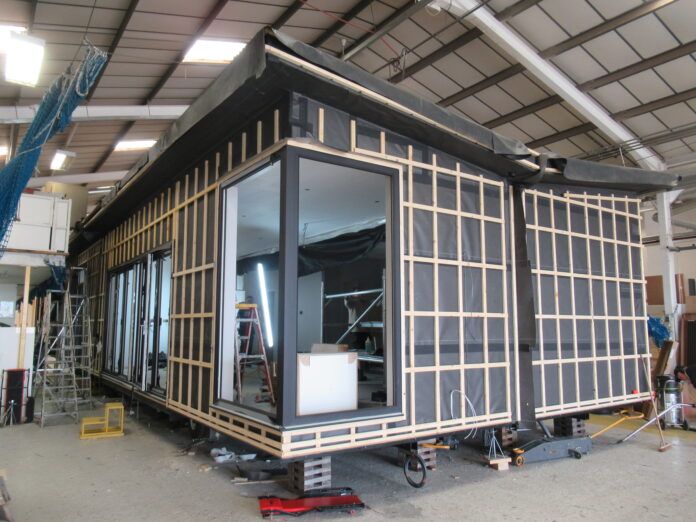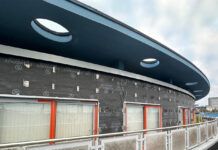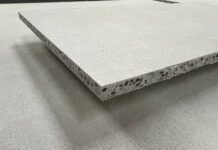The introduction of the Building Safety Act 2022 was focused around higher-risk residential buildings, defined as being above a certain number of storeys or a certain height. But a culture of taking fire safety seriously applies to buildings of all types – and park homes designed for short-term holiday rentals are no exception.
For Lissett Homes, one customer’s request to use a different style of cladding had ramifications beyond the aesthetic appearance of the building. It meant their design team reviewing all of the product specifications and detailing to ensure the necessary performance was achieved – and making use of manufacturer expertise where needed.
Meeting fire safety regulations for park homes
Minimum heights and distances are a key feature of fire safety regulations, and it is no different for park homes and lodges. “The Caravan Act requires a six-metre gap between buildings,” said Chris Close, Design Director at Lissett Homes. “It can be possible to build closer than that, but it depends on the fire classification of the products used in the build-up.” For Lissett Homes, a significant challenge is not having control over how buildings are sited once they leave the production facility. For the two ‘Bainland’ homes under construction, they could make no assumptions about how the buildings would ultimately be positioned.
As Chris explained: “We suspect the customer will site these lodges six metres apart, but we can’t be sure. Also, one large group might rent both buildings at the same time, so the customer might install a timber deck – rather than a paved surface – bridging between the two. That creates an additional fire risk, so we had to make sure the specification was capable of dealing with any eventuality.”
Specifying a wall membrane for the worst-case scenario
The typical Lissett Homes specification features A.Proctor Group’s Proctorwrap Reflect® behind the timber cladding. However, that is based on the external cladding achieving a classification of Class 3 when tested to BS 476-7:1997 Fire tests on building materials and structures. Method of test to determine the classification of the surface spread of flame of products.
For the new ‘Bainland’ homes, the customer requested a type of vertical cladding, treated with linseed oil, which only achieves Class 4 when tested to the same standard. Combined with the uncertainty over the siting of the buildings, Lissett Homes opted to “design and build for the worst-case,” in Chris’s words. That meant looking at incorporating a fire-rated vapour permeable membrane behind the cladding.
The benefits of manufacturer support to refine specifications
Lissett Homes benefitted from A.Proctor Group’s high level of technical support, which started with a recommendation to use Fireshield®, a vapour permeable membrane offering Class B-s1,d0 reaction to fire when classified in accordance with BS EN 13501-1:2002.
U-value calculations and condensation risk analyses were then carried out to show the wall build-up – based on an OSB faced structural insulated panel (SIP) – offered the same thermal and moisture management performance as one featuring Proctorwrap Reflect.
Despite the change in membrane specification, “we were able to maintain the exact same wall structure and panel thickness,” Chris confirmed. Swapping from typical horizontal cladding to a vertical cladding might sound like a relatively simple aesthetic change. For Lissett Homes, working with vertical cladding for the first time, it also meant reworking a host of details, such as around window openings and at soffits.
That reworking included making sure Fireshield was securely fixed so as to not to create a hidden fire risk.




